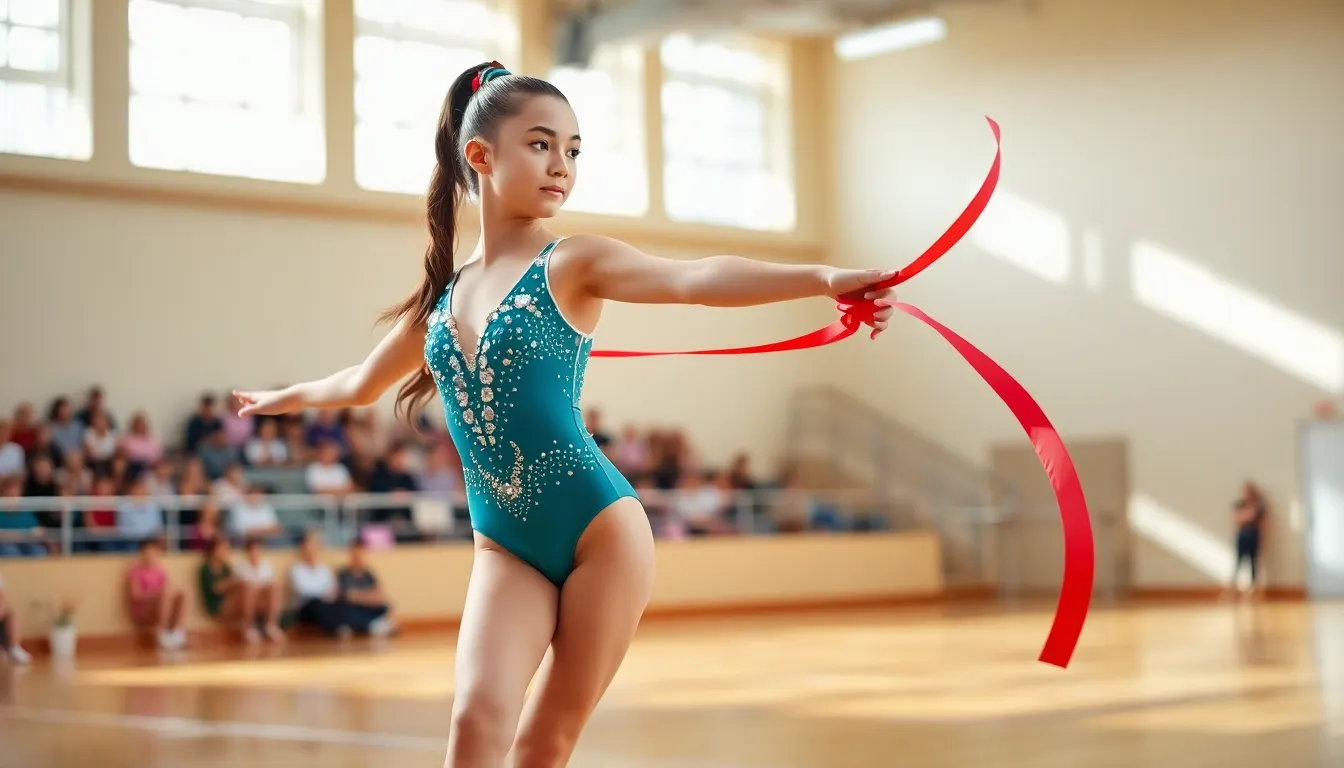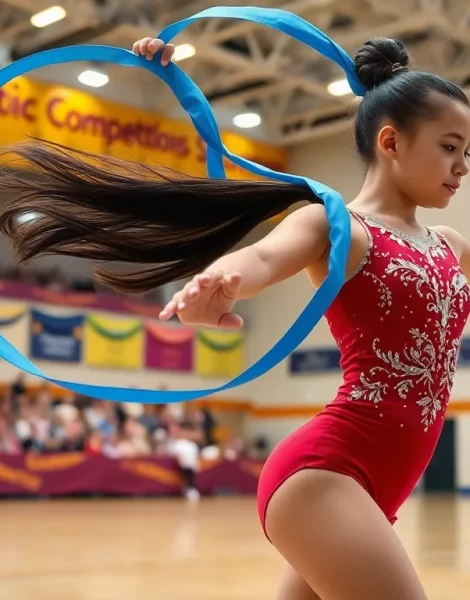Rhythmic gymnastics, a captivating blend of sport and artistry, continues to enthrall audiences around the globe. As it evolves, incorporating new techniques and embracing technological advancements, the landscape of this sport remains dynamic and exciting. In this text, we explore the latest developments, top athletes, and the competitive structure that shapes rhythmic gymnastics today.
Table of Contents
ToggleOverview of Rhythmic Gymnastics

Rhythmic gymnastics combines elements of ballet, dance, and gymnastics, encompassing the elegance of movement with the precision of athleticism. Athletes perform routines using apparatus such as ribbons, hoops, balls, clubs, and ropes. These routines highlight not only technical skills and artistry but also the ability to convey emotion through movement.
Key Elements and Techniques
The key elements in rhythmic gymnastics include flexibility, coordination, and strength. Each gymnast must master various techniques, from intricate jumps and balances to complex choreography that integrates their apparatus. Precision is paramount: gymnasts strive for flawless execution while maintaining a professional aesthetic that captivates judges and audiences alike.
Competitive Structure and Organizations
Rhythmic gymnastics is governed by several organizations that maintain the sport’s standards and organize competitions globally. The International Gymnastics Federation (FIG) oversees international competitions, including the World Championships and the Olympic Games.
Initially, rhythmic gymnastics became an Olympic event in 1984 in Los Angeles, and since then, it has gained immense popularity. Competitions are held at various levels, from local club meets to international tournaments, ensuring that gymnasts can progress through different tiers in their careers. The scoring system also plays a crucial role in competitions, typically evaluating elements such as difficulty, execution, and artistry.
Recent Major Competitions and Events
In the last year, several key competitions highlighted the talents and hard work of rhythmic gymnasts. The 2023 World Championships, held in Sofia, Bulgaria, showcased remarkable performances. The event brought together elite athletes from around the world, each vying for gold.
The championships not only celebrated personal bests but also featured emerging talent, expanding the competitive landscape. Countries like Russia, Bulgaria, and Japan continued to dominate the podium, but the presence of younger athletes indicated a promising future for the sport. Also, the upcoming 2024 Paris Olympics will serve as a pivotal event, potentially introducing new athletes to the global stage.
Highlighting Top Athletes and Performances
Many elite athletes have risen to prominence in rhythmic gymnastics, capturing the hearts of fans while pushing the boundaries of the sport. Notable gymnasts include Dina Averina and Arina Averina from Russia, who have consistently displayed extraordinary talent and have multiple championships under their belts. Their performances blend technical brilliance and emotional expression, earning them numerous accolades.
Besides, rising stars like Lala Kramarenko are making waves in the gymnastics community with their innovative routines and unique styles. As these athletes push the limits, they inspire future generations, ensuring that the art of rhythmic gymnastics remains vibrant and competitive.
Impact of Technology and Innovation
Technology has begun to play a significant role in the evolution of rhythmic gymnastics. From advanced scoring systems that provide more objective assessments to video analysis tools that help gymnasts and coaches refine their techniques, innovation is reshaping the landscape of the sport.
Also, wearable technology allows athletes to track performance metrics and improve their training regimens. This technological integration ensures that gymnasts can focus on their artistry while also maximizing their athletic potential. Besides, new materials for apparatus are being developed to enhance performance, adding yet another layer of sophistication to routines.
Future Trends and Developments
The future of rhythmic gymnastics appears promising, with ongoing efforts to make the sport more inclusive and accessible. There is a growing conversation about diversifying the athlete pool and incorporating more varied styles and international influences.
Also, as the sport continues to embrace technology, fans can expect more interactive viewing experiences, potentially through augmented reality. This could enhance the viewing experience during competitions, making it more engaging for audiences and providing deeper insights into the performances.
Conclusion
Rhythmic gymnastics is in a fascinating phase of growth, shaped by technological advancements, emerging talent, and a commitment to excellence. As athletes continue to innovate and push the boundaries of their performances, the sport promises to evolve further, captivating audiences worldwide. The blending of athleticism and artistry remains at the heart of rhythmic gymnastics, ensuring its status as one of the most beautiful sports on the global stage.









